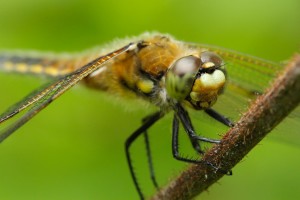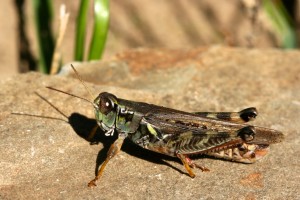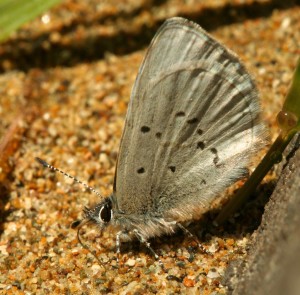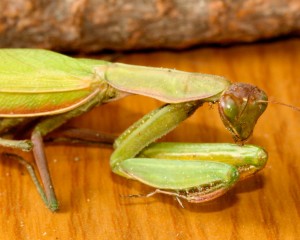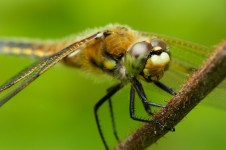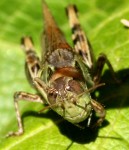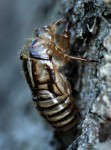Motionless, a dragonfly perches on a twig seemingly watching every movement I make without a twist of its head. No pupils follow my movement, no movement at all.
While I can see the fine details on the dragonfly, the dragonfly’s view of me is completely different. Unlike cartoon depictions of an insect’s view of the world as looking through a kaleidoscope, most insects see a very grainy view of the world–like an extremely pixelated photo.
Most insects have two compound eyes allowing them a greater field of vision than vertebrates. Dragonflies can see in every direction except for the blind spot created by their body.
Compound eyes are composed of multiple facets, or ommatidia. Each ommatidia has a narrow field of view, approximately 20 degrees. Compound eyes differ from vertebrate eyes in that they have one lens for each photoreceptor while vertebrate eyes have one lens for all the photoreceptors.
The lens opening on each ommatidia focuses light onto the photoreceptive nerve cell at its base, which then sends a signal to the brain to process. Nearly 80 percent of a dragonfly’s brain is reserved for analyzing what is sees.
Dragonflies possess one of the largest concentrations of ommatidia in the insect world–over 25,000 in each eye. Most insects possess between 3,000 to 9,000 ommatidia. Butterflies have 12,000 to 17,000 ommatidia but worker ants have as few as six ommatidia.
Within the hemisphere of the compound eye, the ommatidia are packed in a hexagonal pattern, similar to honeycomb. The more ommatidia an insect possesses, the higher the resolution of the image produced.
Day-time moths and butterflies have excellent vision and can detect movement, a wide range of colors and can see in the ultraviolet range of the spectrum. They have poor vision on the red end of the spectrum though.
Bees use the ultraviolet spectrum to find flowers with lots of pollen and butterflies use the ultraviolet spectrum to find a mate.
Some insects cannot focus an image like vertebrates but can detect movement in ways superior to other animals. A dragonfly can detect movement up to 60 feet away.
While people view a movie as constant motion, dragonflies and bees would process the movement quick enough to see the still images creating the movie.
The large eyes of a praying mantis are very sensitive to movement and their forward facing eyes allow for binocular vision, enabling them to accurately judge distance to capture prey.
Insects relying on hunting typically have larger, more efficient eyes, such as praying mantis and dragonflies, than plant-eating insects. Insects that rely on vision to find mates also have larger eyes, such as fireflies. Male mayflies have specially adapted dorsal regions on their eyes that face upwards, allowing them to have a higher sensitivity to movement above them–where the females are flying.
Not only do some insects have compound eyes, they also have their own type of simple eyes. Both grasshoppers and honeybees have five eyes– two large compound eyes and three simple eyes. The simple eyes, called ocelli, are smaller and usually between the antennas or on the back of the head. Researchers believe they are used to detect light levels.
Whether two, three or five eyes, an insect’s view of the world is completely different than ours in terms of clarity, but they can detect movement more efficiently without the slightest movement of their head.

